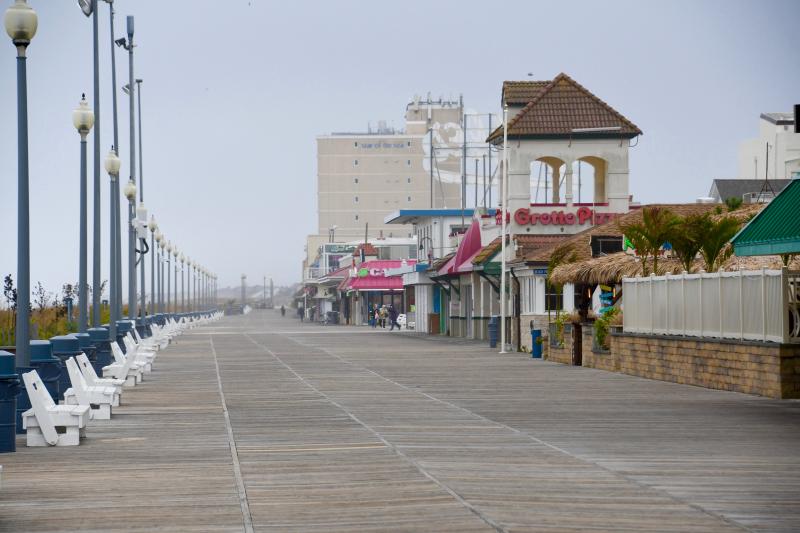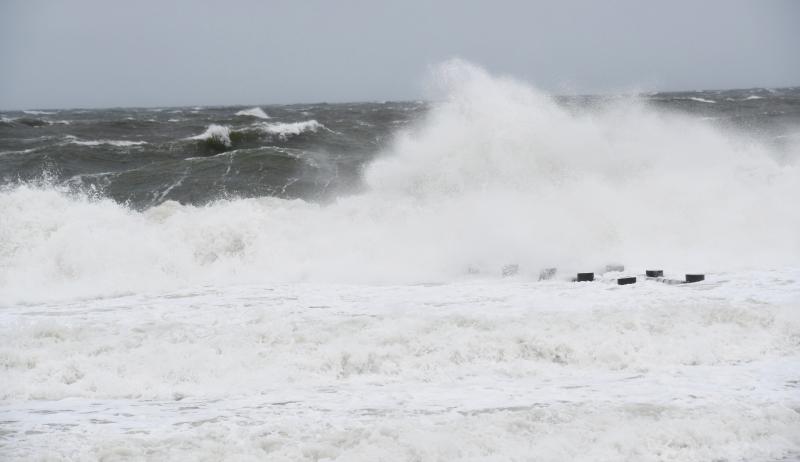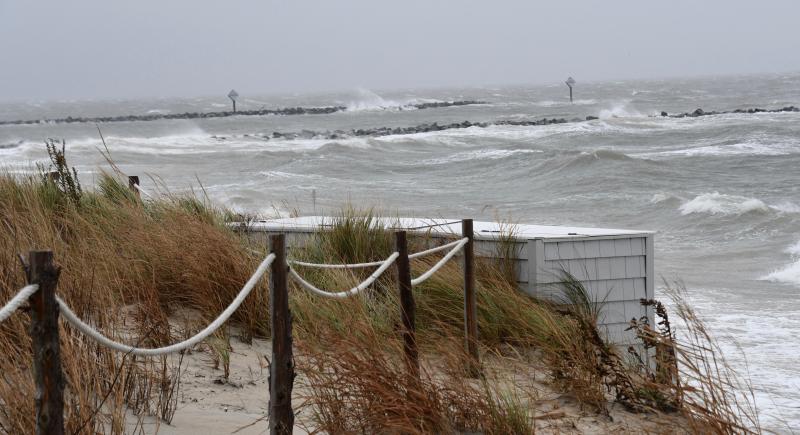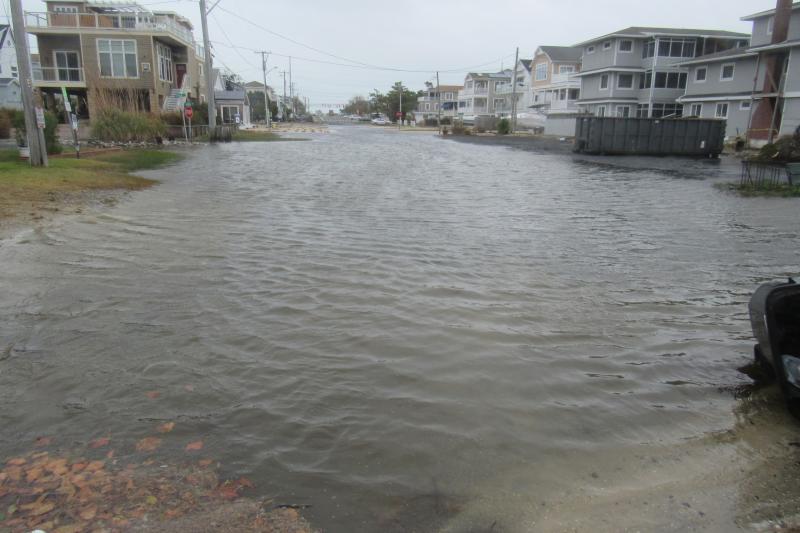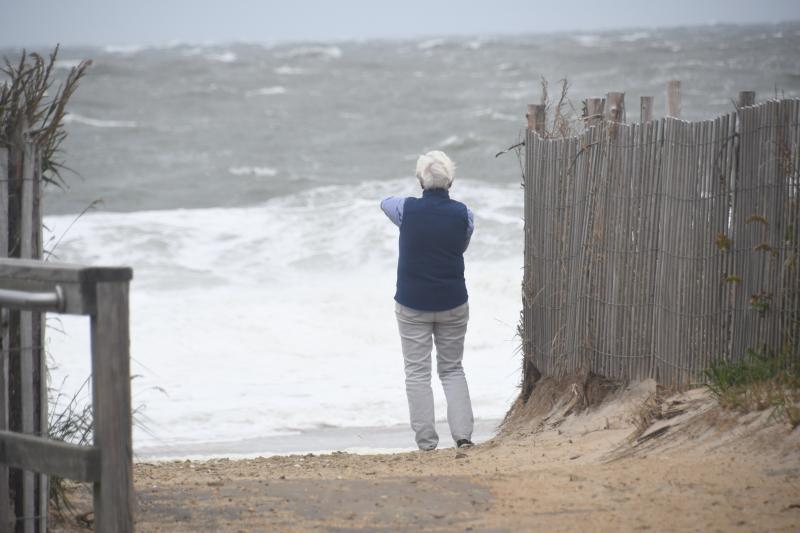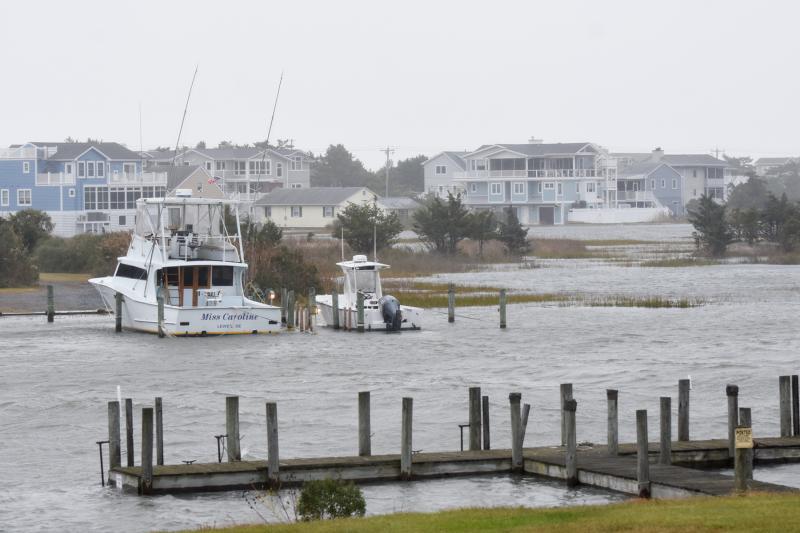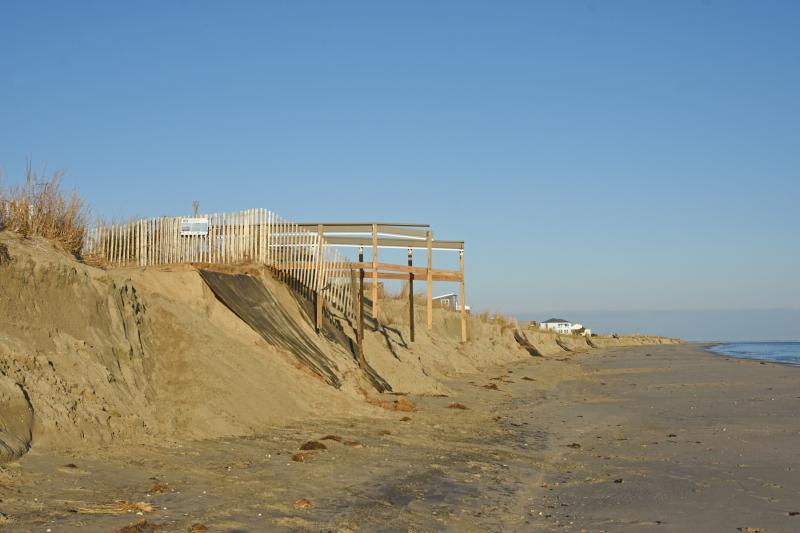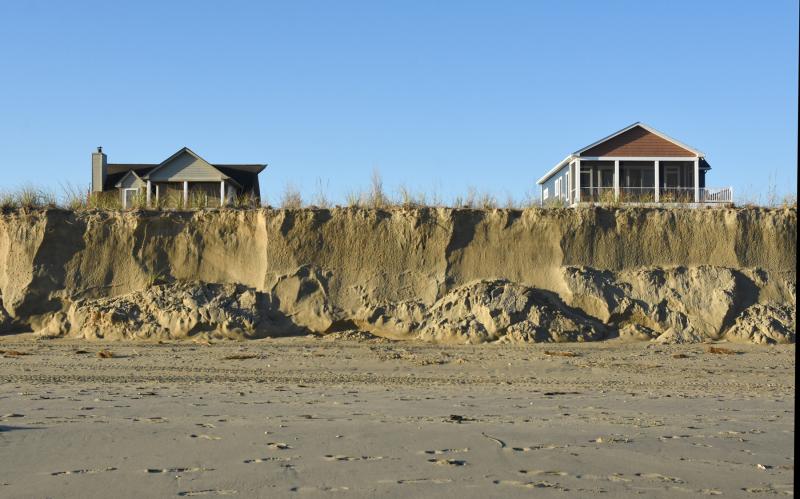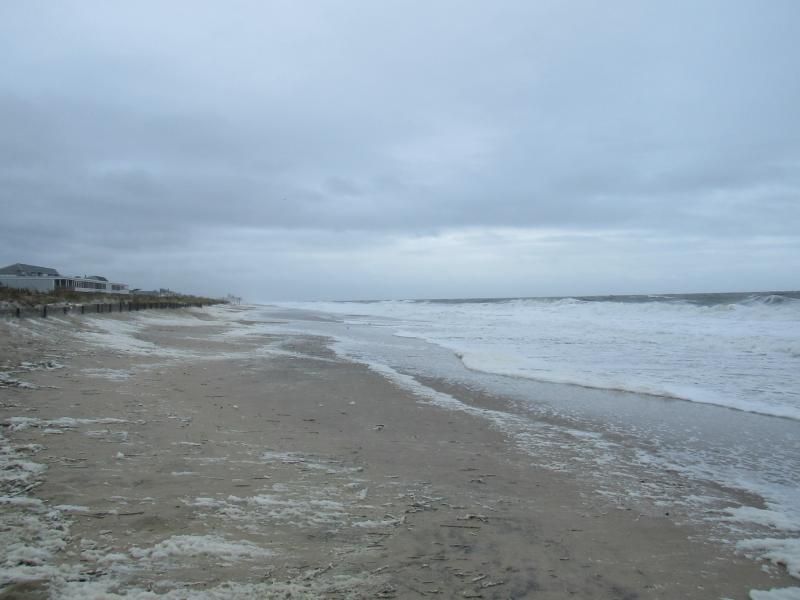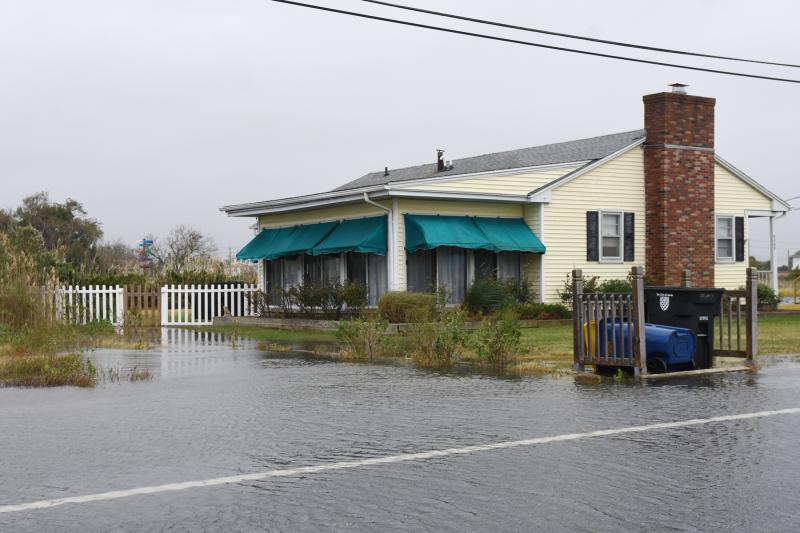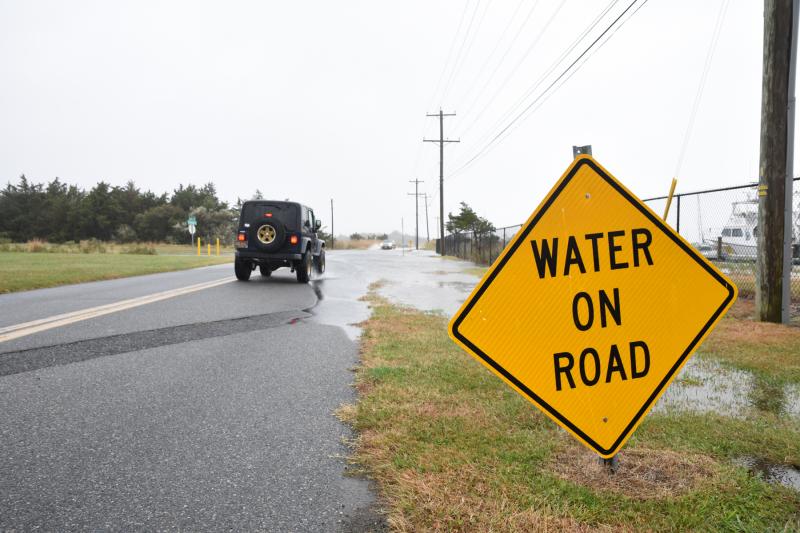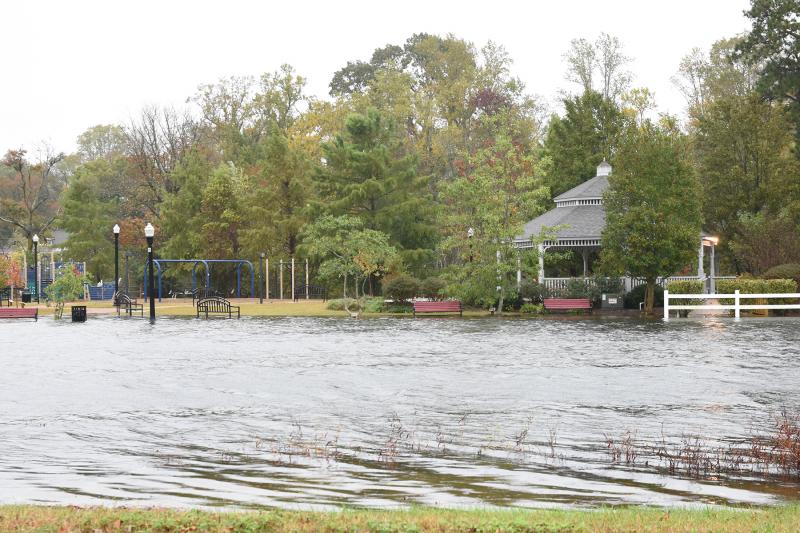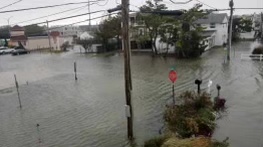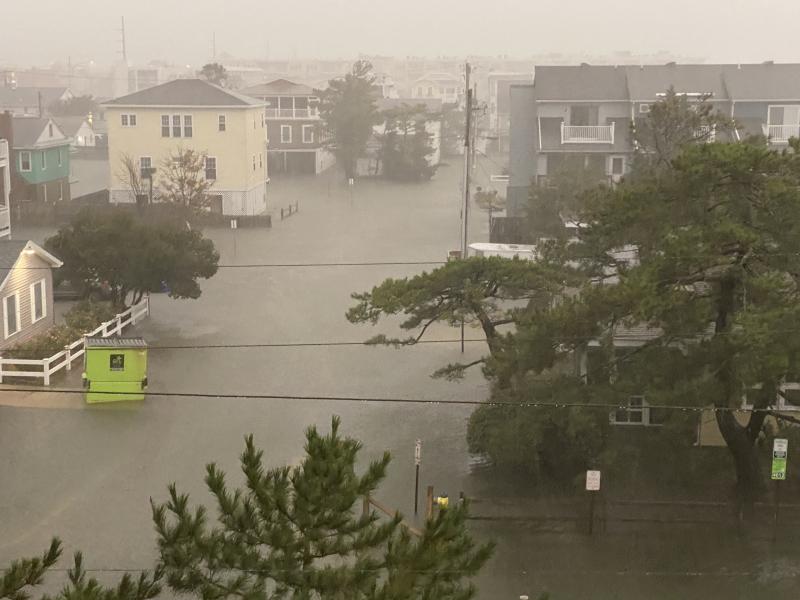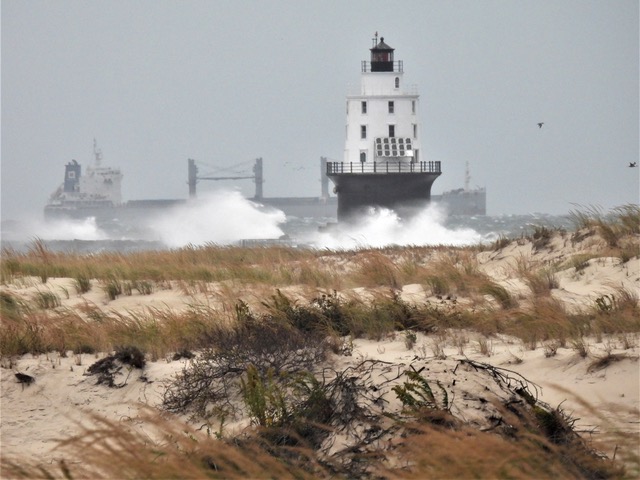Waters rose and winds whipped through the coastal towns of Delaware Oct. 29 as a strong storm system swept into the Cape Region.
Dewey Beach Town Manager Bill Zolper said town officials were constantly monitoring the storm and in communication with state and county emergency agencies throughout the day.
The police department monitored the town for any extensive flooding and downed wires, Zolper said. Verizon wires forced the town to close Read Avenue oceanside, but Verizon responded and had the problem fixed within a couple hours, Zolper said.
Dewey’s maintenance team continually checked the town’s pumping station on Bayard Avenue, and evaluated the beach and dune line.
“The tide came in extremely quick after 4:30 p.m. and flooded Dewey for three hours,” Zolper said. “Water came over the barrier at the pump station. Bellevue and Bayard [streets] flooded. The pumps couldn’t keep up with the tide.”
The stretch of Route 1 between Dewey Beach and Bethany Beach closed about 5:30 p.m., Oct. 29, and reopened about 6:30 a.m., Oct. 30.
At about 8:30 a.m., Oct. 30, Zolper said flooded streets were slowly draining, with Read Avenue hit the worst. Town crews were back at 3 a.m., Oct. 30, working on the pumps at Bayard Avenue and clearing storm drains around town, Zolper said.
Flooding and damage were not limited to Dewey, as the Cape Region’s other beaches were also pounded by the storm. Bay water carved into the dunes in Lewes and Broadkill Beach, leaving cliffs as tall as 10 feet behind. The beach near Indian River Inlet bridge was also affected.
“Friday's storm did have a significant impact on Lewes, further eroding the beach,” said Lewes Mayor Ted Becker. “In addition, although the actual storm event lasted only a few hours here in Lewes – roughly from 4 to 7 p.m. – the flooding of low-lying areas was significant.”
DNREC’s Shoreline and Waterway Management section is assessing areas that were impacted by erosion and assigning priorities for repair and restoration, said Jesse Hayden, acting administrator and project engineer.
“The Delaware Seashore State Park beach north of Indian River Inlet experienced dune erosion in the storm that was mitigated by ongoing sand management by DNREC that will continue throughout the winter,” Hayden said. “Along the Delaware Bay beaches, DNREC will evaluate opportunities to restore the main pedestrian dune crossing at the end of Route 16 in Broadkill Beach, while monitoring the conditions there throughout the winter so as to plan maintenance on other less-trafficked dune crossovers.”
In Lewes, he said, they will similarly evaluate opportunities to restore some pedestrian dune crossings, though it is unlikely they will have the ability to address all crossovers immediately. “We will also continue to evaluate the location of dune fencing relative to the eroding dune, adjusting its location if necessary,” he said.
Hayden said Delaware is in the early days of the 2021-22 winter storm season that could bring additional storms and beach erosion.
“Our goal goal right now is to comprehensively assess the erosion damages across all of the beach communities to prioritize our response,” he said. “We are in the planning stage of a project to potentially haul sand into Pickering Beach, Kitts Hummock, Bowers, Slaughter Beach and Delaware Seashore State Park to nourish portions of those beaches and the dunes most susceptible to chronic erosion. We are currently evaluating opportunities to adjust the plans for that project in response to the storm erosion that has occurred since the most recent storm.”
